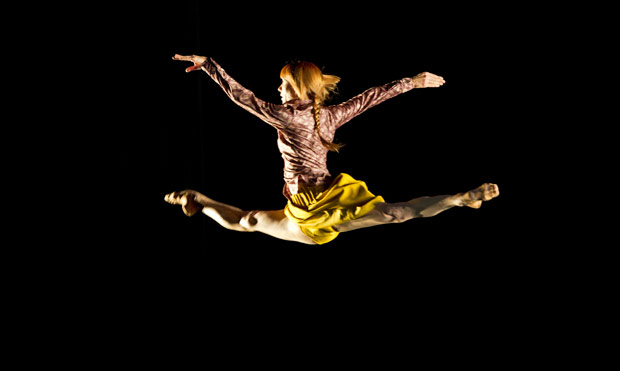
Sylvie Guillem
6000 Miles Away: Rearray, 27’52”, Bye
London, Sadler’s Wells
20 May 2013
www.sylvieguillem.com
www.sadlerswells.com
The easy, fluid articulation of Sylvie Guillem’s hip as she smoothly develops one long leg into a towering arabesque à la seconde is a beautiful, rotational gliding motion that would put mostly everyone else on the planet straight into hospital. And she does it again and again. She brings to mind that popular song Defying Gravity from the hit musical Wicked. Guillem picks no quarrel with the gravitational force but she sure defies physics, biology and is perhaps most disobedient of all with the ageing process. No-one should be able to move like this at the age of 48 without the aid of bionic implants. And yet, there is not the slightest hint of the grotesque about the supremely athletic, yet naturally graceful movements of this particular Six Million Dollar woman.
These thoughts hit me as I watched her tackle the deconstructive classicism of William Forsythe’s Rearray, one of two works made especially for Guillem in this brief but satisfying programme that is just as enigmatic as its legendary star. By bringing back to London these pieces by Forsythe, Mats Ek and Jiȓí Kylián, Guillem also reminds us how starved we are of the output from these three titans of modern dance.
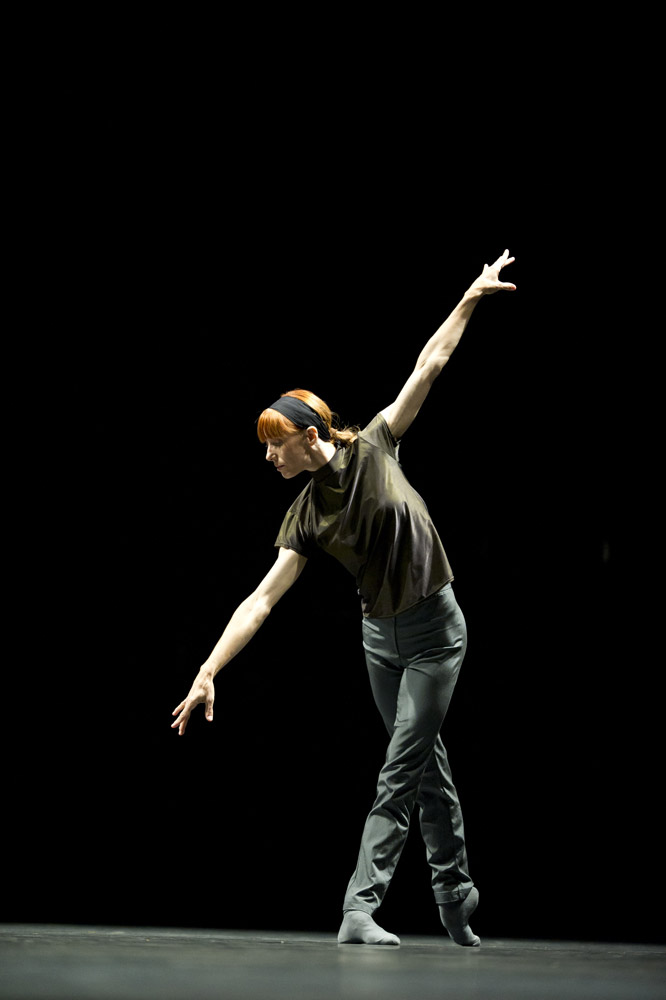
To keep us on our toes, the programme ran in a slightly different order from earlier visits with Kylián’s 27’ 52” (the work in which Guillem does not appear) trading places with Rearray to begin the show. Aurélie Cayla reprised her performance from 2011 but this time appearing with Lukas Timulak, another former dancer from Nederlands Dans Theater. Both have lost none of the extraordinary range of subtle, sensual, feline movement that defines NDT performers and they combine these skills to supercharge a complex, sweeping duet.
Kylián leaves nothing unexplained in his choreography. There is never a narrative but there is always a meaning to every second of his work. But I confess to being lost as to why Cayla needs to discard her red t-shirt part-way through the piece, coming out in topless solidarity with her partner. It brings a new meaning to the old sharing expression of “going Dutch” and although I’m not known for complaining about being exposed to such winsome breasts, it seemed to be an exposure without any particular intent. I found myself in the strange position of mentally dressing Aurélie in the red t-shirt in order to assess what harm would be done to the ambience and flow of the work and the answer came back, none!

Linearity is something that Forsythe avoids like the plague in his later works. He often invests his choreography with elements that disturb a complacent view of uniformity, switching motifs suddenly or – as here – punctuating chapters of movement with interludes of silence and darkness, during which the two dancers take up new positions elsewhere on- or off-stage. Rearray has twisted, spiky classical language threaded through its twelve sections, as if classical ballet technique has been put through a post-modern mangle so that what appear are familiar ballet movements with an edgy extra dynamic and with the linking steps and preparations given a makeover. Each succeeding sequence seems to expand in terms of length and complexity. Lighting levels alter dramatically throughout the piece; the stage is bare, the costumes deliberately unremarkable, and David Morrow’s spare score with its meagre ration of violin and piano notes adds to the post-modern austerity of a work that is at its best in the sharp bursts of light and the explosive movement from the two dancers: Guillem partnered by the extravagantly pony-tailed Massimo Murru. They hardly touch each other until the concluding chapters but their disconnected solos build into an arresting final duet with its slow and purposeful diagonal passage of interwoven steps.
If there is zero evidence of character in the abstract engineering of Forsythe’s choreography, then Guillem’s personality shines through Mats Ek’s Bye like a powerful lighthouse beacon on a stormy night. Her character’s world seems imprisoned in a door-size aperture, where she is first encountered as an enormous single eye, the camera panning back to reveal an unmistakeable cheekbone, nose and a glimpse of that familiar auburn fringe. The eye searches inquisitively, as if she has found a portal into another sphere until eventually the real Guillem emerges, first, just as a hand clinging to the top of the door, and then her whole body rolling out of the side in perfect symmetry with the film. On the outside, she catches glimpses of her “other world” back inside the “door” with a portly dog, a man and, finally, a whole community beckoning her to come back.
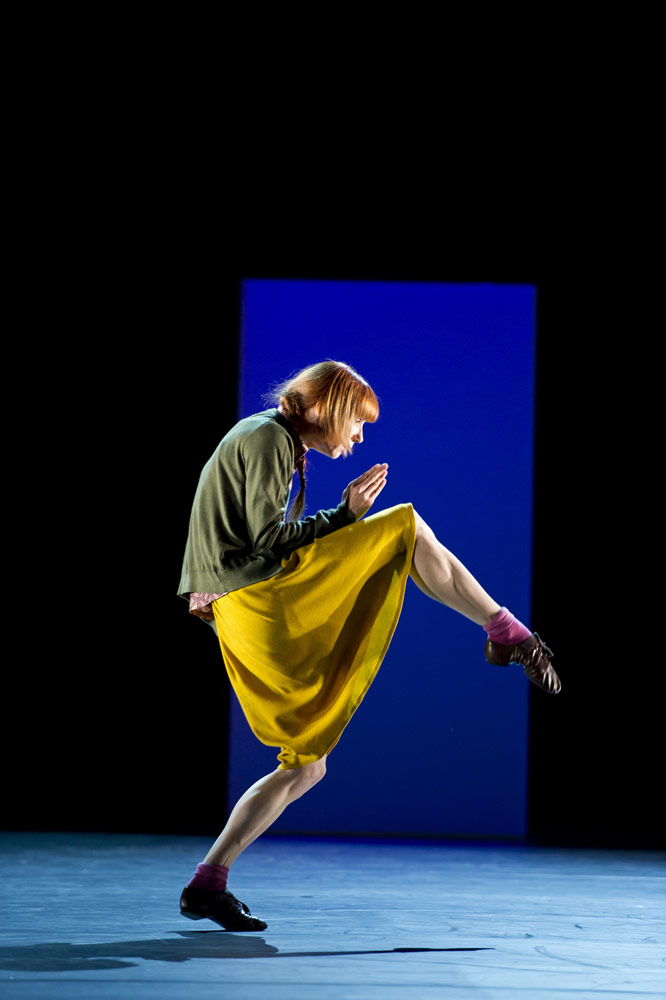
The renegade Guillem is dressed soberly in a knee-length mustard skirt, a floral blouse, ankle socks and a matronly cardigan, although she carefully discards the outer layers of clothing and footwear to begin her playful sequences of dancing. The dog and the man in the other dimension suggest an adult woman with obligations but breaking free from the portal she becomes a teenage schoolgirl having escaped the convent for a playful, innocent and lonely frolic in the fields.
Guillem is at ease with the quirky Scandinavian humour of this charming work studded with skips, jumps and the yoga-style – inverted Buddha – head-standing, a trick she repeats one last time before going home. In the dancing days when the mustard skirt was normally a tutu, Guillem’s performances will have elicited many a standing ovation. At the end of Bye, a man nearby leapt to his feet and shouted “awesome”. She sure is.













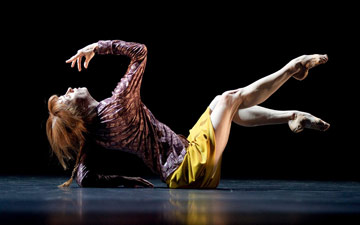
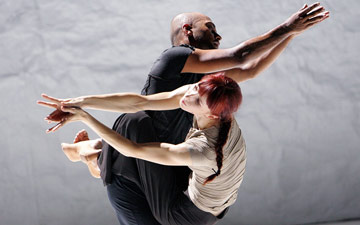
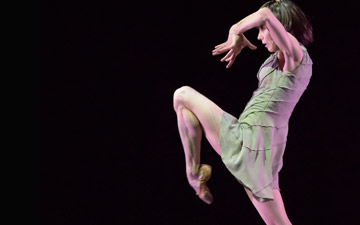
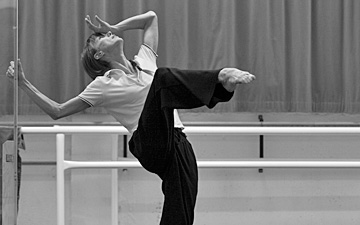
You must be logged in to post a comment.